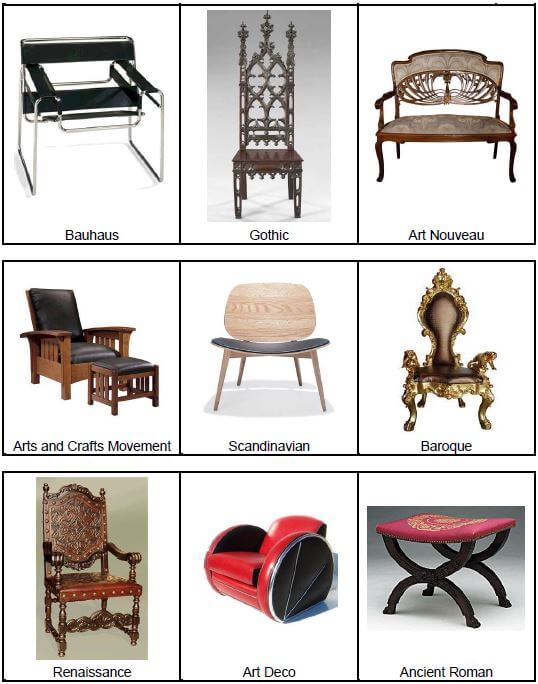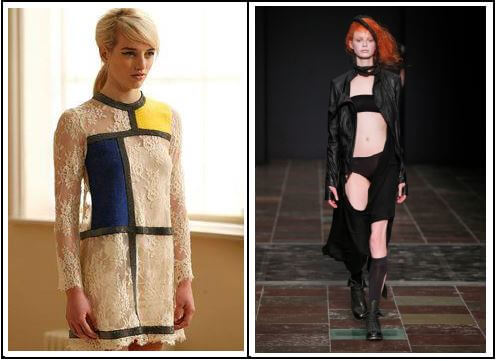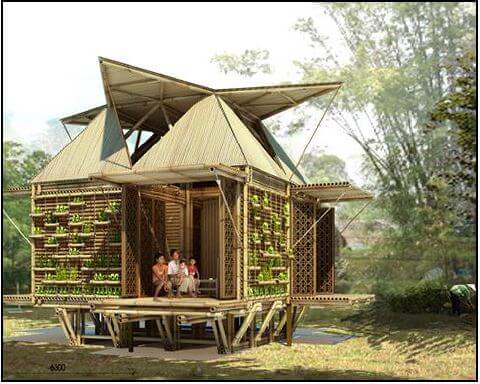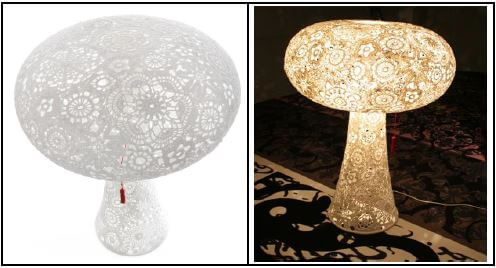DESIGN GRADE 12 PAPER 1 QUESTIONS - NSC PAST PAPERS AND MEMOS SEPTEMBER 2017
Share via Whatsapp Join our WhatsApp Group Join our Telegram GroupDESIGN
GRADE 12
PAPER 1
NSC PAST PAPERS AND MEMOS
SEPTEMBER 2017
INSTRUCTIONS AND INFORMATION
- This question paper consists of SIX questions. Answer all the questions.
- There are choices within some questions in the paper. Read the different options carefully.
- This question paper consists of THREE sections:
SECTION A: DESIGN LITERACY
QUESTIONS 1–3 [30 marks]
SECTION B: DESIGN HISTORY
QUESTION 4 [30 marks]
SECTION C: DESIGN IN A SOCIO-CULTURAL /
ENVIRONMENTAL AND SUSTAINABLE
CONTEXT
QUESTION 5–6 [40 marks] - Read the requirements of the questions carefully.
- Answers must be in the form of full sentences. Listing of facts is not allowed.
- Use the mark allocation for each question to determine the amount of time to be spent on the question as well as the number of facts required.
- Do not repeat the same facts and examples in different questions. 8. Write neatly and legibly.
GLOSSARY
Use the following glossary to make sure you understand how to approach a particular question:
- Analyse: A detailed and logical discussion of the formal elements and principles
- Compare: Point out differences and similarities in an ordered sequence within the same argument
- Discuss: Present your point of view and give reasons for your statements (motivate).
- Explain: Clarify and give reasons for your statements (motivate).
- Interpret: Give an informed opinion, supported by examples.
- State: Say directly what you think – give your opinion as well as an explanation.
QUESTIONS
SECTION A: DESIGN LITERACY
QUESTION 1: ‘UNSEEN’ DESIGNS TESTING VISUAL LITERACY
Answer EITHER QUESTION 1.1 OR QUESTION 1.2.
1.1
FIGURE A: Engraved Perspex/Lucite bangle
designed by Phillipa Green, Olive Green Cat, Cape Town
1.1.1 Discuss a possible target market for the product seen in FIGURE A? Supply reasons for your answer. (2)
1.1.2 Analyse and discuss the use of the following elements and principles of design in FIGURE A above:
- Shape and Form
- Balance
- Movement/Rhythm
- Focal point/Emphasis (8)
[10]
OR
1.2
| |
| |
| FIGURE B: Bloom lamp designed by Patrick Jouin, iD Design, Paris |
1.2.1 Study the above images provided in FIGURE B. Analyse and discuss the following:
- Tone/Tonal value
- Unity and variety
- Texture
- Pattern (8)
1.2.2 Discuss the use of bio-mimicry in the design of FIGURE B. (2)
[10]
QUESTION 2: COMMUNICATION THROUGH DESIGN
2.1
| FIGURE A: Anti-cyberbully poster, designed by CyberMentors, United Kingdom |
2.1.1 What is the message being conveyed by the poster in FIGURE A? (1)
2.1.2 Explain how the designer has made use of symbolism, imagery, layout and text to effectively convey the message of the poster in FIGURE A above. (4)
2.1.3 Identify and explain the Gestalt Principle that is evident in the above poster design. (2)
2.2
| FIGURE B: Desmond Tutu poster designed by Simon Berndt, One Horse Town Studio, Cape Town |
2.2.1 Discuss the possible stereotype that can be applied to the poster in FIGURE B. (1)
2.2.2 Identify TWO symbols seen in FIGURE B and explain how they support the stereotype being communicated by the poster. (2)
[10]
QUESTION 3
Answer EITHER QUESTION 3.1 OR QUESTION 3.2.
3.1 Refer to FIGURE A and FIGURE B and answer the questions that follow.
| FIGURE A: isiXhosa bridal necklace, South Africa | FIGURE B: Indian bridal necklace, India |
The above designs in FIGURE A and FIGURE B reflect examples of bridal necklaces worn at traditional weddings. COMPARE the two designs, by discussing similarities and differences with reference to:
- Materials
- Shape and Pattern
- Unity
- Aesthetic appeal
- Production technique
(Do not use tables or headings. Use paragraphs.)
[10]
OR
3.2
| | |
| | |
| FIGURE C: The SA Perm Building (Building Society/banking) in High Street, Grahamstown, 1987, Erasmus Rushmere and Reid architects | |
Write a COMPARATIVE ESSAY (of at least ONE full page) in which you compare ONE classical building that you have studied with the contemporary building seen in FIGURE C above. Alternatively you may compare any Classical building (that you have studied) with any contemporary building.
Include the following information in your discussion:
- Context
- Purpose/Function
- Layout/Plan
- Materials and production techniques
- Relation to the site
(Do not use tables or headings. Use paragraphs.)
[10]
TOTAL SECTION A: 30
SECTION B: DESIGN HISTORY
QUESTION 4
4.1
 |
| FIGURE A |
| “The designer’s true role is to better the things which surround us not only in terms of function, appearance, cost and material but also in terms of aspiration and desire – in the dream of how good life might be.” Terence Conran |
With reference to the above quote write TWO SEPARATE ESSAYS about TWO of the design movements, styles or periods shown in the images of FIGURE A.
For each movement include the following information in your discussion in support of the statement above:
- The origins and evolution of the movement, style or period
- Aims
- Influences
- Characteristics of the movement, style or period
- The name of ONE designer associated with the movement, style or period and the title, with a brief description, of ONE of his/her designs (20)
4.2 Carefully study the images in FIGURE B and FIGURE C below and then answer the questions that follow.
 | |
| FIGURE B | FIGURE C |
4.2.1 Identify the design movements/styles that FIGURE B and FIGURE C represent. (2)
4.2.2 Write a COMPARATIVE ESSAY in which you compare FIGURE B with FIGURE C to show your understanding of the similarities and differences between the two design movements/styles according to the following:
- Balance
- Proportion/Scale
- Movement
- Focus/Emphasis/Dominance
Support your answer with factual information from each design movement/style. (8)
[10]
TOTAL SECTION B: 30
SECTION C: DESIGN IN A SOCIO-CULTURAL/ENVIRONMENTAL AND SUSTAINABLE CONTEXT
QUESTION 5
Answer EITHER QUESTION 5.1 OR QUESTION 5.2.
5.1 Carefully study the image in FIGURE A below, as well as the accompanying information and quote. Then answer the questions that follow.
 |
| FIGURE A: Bamboo homes designed by H&P Architects in Vietnam |
These affordable homes are made from sustainable local bamboo. Severe flooding is prevalent in Southeast Asia by rising and falling incoming waters. Therefore the thatched homes are built on platforms made from reused oil drums and kept in place on anchors, allowing the structures to float in place during flood season. |
| “Design is an attitude and an activity concerned with solving human problems with a changing environment.” H.K. Vyas |
5.1.1 With reference to the image in FIGURE A and the quote by H.K. Vyas, give the following information:
- An explanation of the term ‘socially responsible design’ (2)
- Evaluate the design in FIGURE A to show whether or not it can be considered socially responsible (4)
5.1.2 Discuss the work of ONE contemporary South African designer/design group and ONE international designer/design group whose work addresses socio-cultural issues in some way.
In an essay of at least ONE full page include the following:
- The name of the designer or design group, indicating South African or international
- The style of work that the designer/design group produces
- An explanation of the social-cultural issue(s) that they address
- The name and a brief discussion of ONE work by each designer/design group
- The social impact that their designs can or have made on society
You may NOT refer to any designer(s) that you have discussed previously or designers referred to in this question paper. (14)
[20]
OR
5.2
 |
| FIGURE B: The Crochet Lamp is part of the Personal Editions collection from Dutch designer, Marcel Wanders |
5.2.1 Do you think that the product design in FIGURE B above is considered design or craft, or both? Give reasons for your answer. (2)
5.2.2 Discuss any ONE indigenous craft that you have studied. In your discussion, refer to the following:
- The name of the indigenous community that produced it, origins and traditional history
- Function and social role
- Materials and methods
- A description of ONE example (8)
5.2.3 Discuss the work of ONE contemporary South African or African designer who incorporates traditional methods and/or materials into their designs thereby addressing social and/or cultural issues.
In an essay of ONE full page, include the following:
- Aims and influences
- Characteristics and a detailed description of how the traditional techniques/methods and/or material(s) have been applied in modern/contemporary design. Refer to specific examples.
- Discuss the general socio-cultural contribution made by the designer/design group.
You may NOT refer to any designer(s) that you have previously mentioned, or written about. (10)
[20]
QUESTION 6
Carefully study the images in FIGURE A below, as well as the accompanying information on the following page. Then answer the questions that follows.
 |
| FIGURE A: Rethaka Repurpose Schoolbag designed by eco-social entrepreneur, Thato Kgathlanye, Johannesburg, South Africa |
A Rethaka Repurpose Schoolbag is a recycled schoolbag with a built-in solar panel that charges up during the day and transforms into a solar-jar lamp at night. |
6.1 The design in FIGURE A can be considered a good example of social as well as a sustainable environmental design.
Explain ways in which environmental issues and the community benefit from this design. (6)
6.2 In an essay, discuss the work of any ONE contemporary South African and ONE contemporary international designer/design agency or studio (at least 1½ pages) you have studied whose work addresses environmental and/or sustainable issues.
Include the following information:
- The name of the designer/design agency or studio
- How the designer/design agency or studio addresses environmental and/or sustainable concerns in his/her/their design process
- The title and a brief description of ONE major design/design project undertaken by this designer/group
You may NOT refer to any designer that you have previously discussed, or designers referred to in this question paper. (14)
[20]
TOTAL SECTION C: 40
GRAND TOTAL: 100